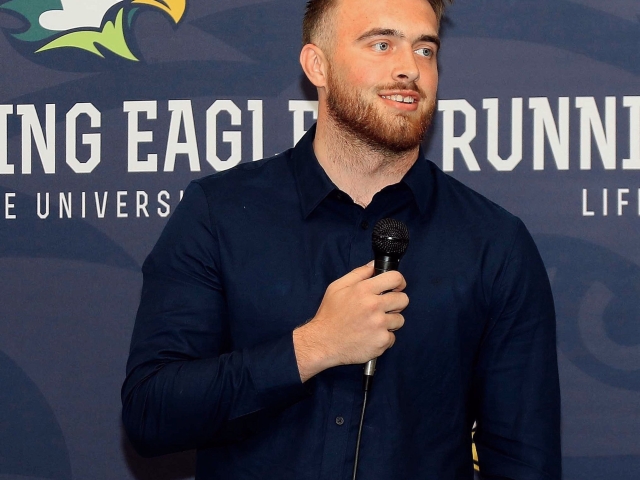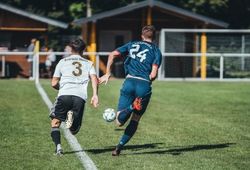Written by Andrew Kean, University of Cincinnati's first All American Award Winner and CEO of FirstPoint USA.
Why the Court Case?
The House v. NCAA case, filed in 2020, challenged the NCAA's restrictions on student-athlete compensation, particularly regarding their Name, Image, and Likeness (NIL) rights. The plaintiffs argued that the NCAA's rules violated antitrust laws by preventing athletes from earning money from their athletic abilities. This case, along with related lawsuits, has led to a settlement that will alter how student-athletes are compensated.
New Legislation Changes
The settlement introduces several key changes, set to take effect from July 1, 2025:
- Direct Payments to Athletes and University Cap: Universities in Power 5 conferences (and those who opt-in from other Division I conferences) can directly compensate student-athletes. There will be an initial cap on these payments, set at approximately $20.5 million per school for the 2025-26 academic year. This figure represents about 22% of the average athletic department revenue for power conference schools, derived from sources like media rights, ticket sales, and sponsorships. This cap is designed to increase by 4% annually over the 10-year agreement.
- Revenue Sharing: Schools can share revenue with athletes up to this predetermined cap. The specific distribution of this money will vary among institutions, though it's widely expected that a significant portion will go to revenue-generating sports like football and basketball.
- No Scholarship Limits, New Roster Limits: The traditional limits on the number of scholarships a team could offer have been removed. Instead, new roster limits will be imposed for each sport, allowing schools to offer full scholarships to all athletes on the roster. For example, FBS football teams will move to a 105-player roster limit.
- NIL Deal Oversight: All NIL deals over $600 will be subject to review by a clearinghouse ("NIL Go"), run by Deloitte, to ensure they reflect fair market value and are not disguised "pay-for-play" arrangements. This aims to prevent schools from circumventing the direct payment cap through inflated third-party NIL deals.
- Back Payments: The NCAA and Power 5 conferences will pay approximately $2.8 billion in damages to Division I athletes who competed between 2016 and 2024. These payments will be distributed over 10 years, with the majority (around 95%) going to football and men's and women's basketball players in the Power 5 conferences.
Impact on Universities and Students
These changes will have a wide-ranging impact:
- Financial Implications for Universities: Schools will need to significantly adjust their budgets to accommodate the new revenue-sharing model and increased scholarship funding. Larger institutions with substantial athletic revenue are better positioned to manage this transition, while some smaller programs may face greater financial challenges.
- Increased Opportunities for Athletes: More athletes will have the chance to receive scholarships, and they can also earn money through NIL deals and direct payments from their schools.
- Roster Management: Coaches will need to strategically manage their rosters under the new limits, which may affect walk-on players and overall squad sizes.
- Compliance and Enforcement: A new enforcement entity, the College Sports Commission, has been established to oversee compliance with the rules around roster limits, revenue sharing, and NIL deals.
Potential Earnings for Students
The financial landscape for student-athletes is changing dramatically. While some top athletes have already secured lucrative NIL deals, the new legislation will allow more athletes to earn money directly from their universities. For student-athletes in major revenue-generating sports like football and men's basketball, individual earnings could potentially reach six figures annually, and for some elite athletes, even seven figures when combining university payments with external NIL deals.
However, the distribution within the $20.5 million cap per school will be at the discretion of each university, meaning individual athlete earnings will vary significantly based on their sport, role, and marketability. Many expect that the bulk of the $20.5 million per school will be directed toward football (estimated around 75%) and men's basketball (around 15%), with smaller portions for women's basketball and other sports.
The Future of College Sport
The House v. NCAA settlement marks a turning point in college sports. The long-standing tradition of amateurism is evolving, with athletes gaining more financial rights. This could lead to a more professionalized model, potentially blurring the lines between college and professional sports.
As NCAA President Charlie Baker stated following the settlement's approval, "This is a significant moment for college athletics that will provide unparalleled opportunities for student-athletes. We look forward to implementing this new system which offers much-needed transparency and structure to create a more sustainable model for the long-term future of college athletics."
Key aspects of the future include:
- Increased Financial Support for Athletes: Direct payments and the removal of scholarship limits will provide greater financial support for student-athletes.
- Potential Restructuring of College Sports: The changes may lead to a restructuring of college sports, with some smaller programs facing financial challenges and a potential further consolidation of power within the major conferences.
- Greater Scrutiny of NIL Deals: The oversight of NIL deals aims to prevent unfair practices and ensure a level playing field, though the effectiveness of this remains to be fully seen.
The House v. NCAA settlement is a transformative event that will reshape college athletics for years to come. It introduces both opportunities and challenges for universities and student-athletes as they navigate this new era.




